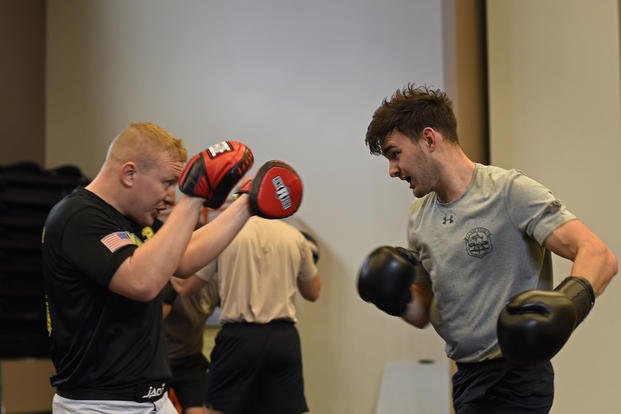My first martial arts instructor, Master Ron LeBlanc, had a unique style of teaching how to block a punch. He would stand you up against a wall and punch you -- no gloves, no padding, nothing but air between his knuckles and your face.
If you blocked it, great. If not, you got punched (with reserved power, of course).
But we're not talking about just one single punch. He would throw punch after punch from all angles and wherever he saw an opening to get in and tag you.
As "realistic" as this extreme version of training may seem, it still does little to mimic a real punch in a real fight.
In the dojo, I knew a strike was coming. Our positions remained fixed, and if one punch landed, it didn't hit hard enough to keep me from thinking about the next strike. You most likely won't have those luxuries in a real street fight.
Master LeBlanc drilled into our heads over and over again: "No matter how much you train here, 90% of the time, the person who gets the first punch is going to win the fight."
By the time your attacker has punched you, he's already gone through his "strike analysis." He knows how he wants to hit you, where he wants to hit you and when he wants to hit you. All that's left is to hit you.
By the time you see the strike coming, you've barely begun your own "blocking analysis" of how you're going to avoid getting hit, and there surely isn't enough time to pull out Block #57 from Kata #12.
Unless you're dealing with a drunken idiot who goes for a slow-motion haymaker from left field, you're most likely not going to block a punch, at least not in the "traditional" sense.
Fortunately, our days of wearing loincloths and running from predators instilled in us the natural reaction of movement.
Once your eyes and brain identify that a strike is coming, your natural reaction is to move, and the best way not to get hit is not to be where the punch is.
Your attacker had a target already picked out. It may have been simply the "vicinity" of your head, but he already loaded the freight train, and once he let it leave the station, he had no further control over it.
So even if you move just a few inches, that punch isn't likely to hit you with any great force, and this gives you an opportunity for a counter.
Countering a punch is a whole other article I'll get to, but for now, here's the lesson.
The sooner you can identify a punch is coming, the sooner you can move to nullify that punch (or launch your own "first strike").
So learn to identify your attacker's body language that signals a punch is coming.
Here are some red flags to be aware of:
-- He begins to grit his teeth, or you notice his jaw moving "angrily."
-- He clenches his fists.
-- His breathing becomes shallow and forced.
-- He suddenly shifts one foot in front of him.
-- His chin "drops" (this is a natural reaction to protect the throat)
-- His shoulder "drops" (the first phase of the "windup" for the most common punch)
-- He turns his body to the side (away from you), but the fight hasn't ended yet.
More from Anderson:
Jeff Anderson is a 10-year veteran of the U.S. Army, a master instructor of close quarters combat self-defense and president of the International Society of Close Quarter Combatants. A full-time, self-defense author and instructor, Anderson has trained military, law enforcement and civilians in advanced close-quarters combat tactics for "real-life" self-defense.
Want to Learn More About Military Life?
Whether you're thinking of joining the military, looking for fitness and basic training tips, or keeping up with military life and benefits, Military.com has you covered. Subscribe to Military.com to have military news, updates and resources delivered directly to your inbox.


















